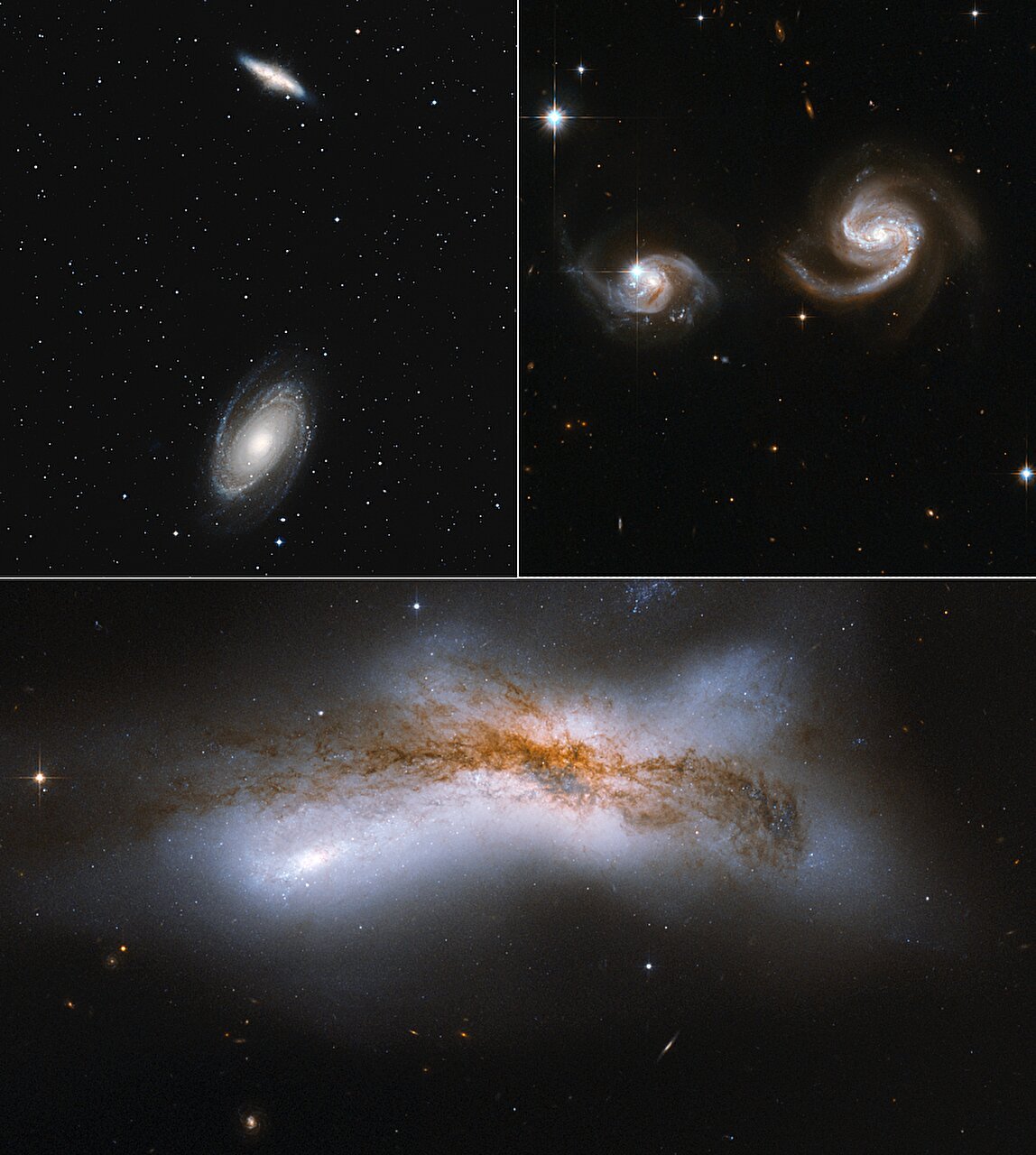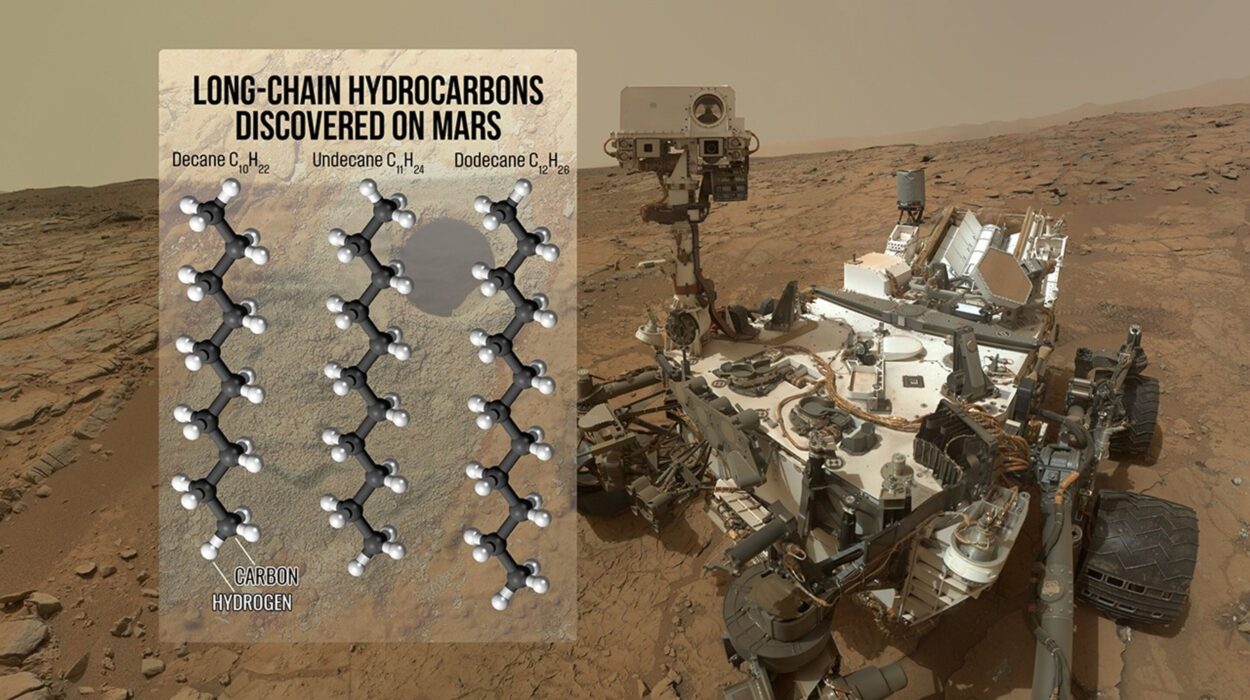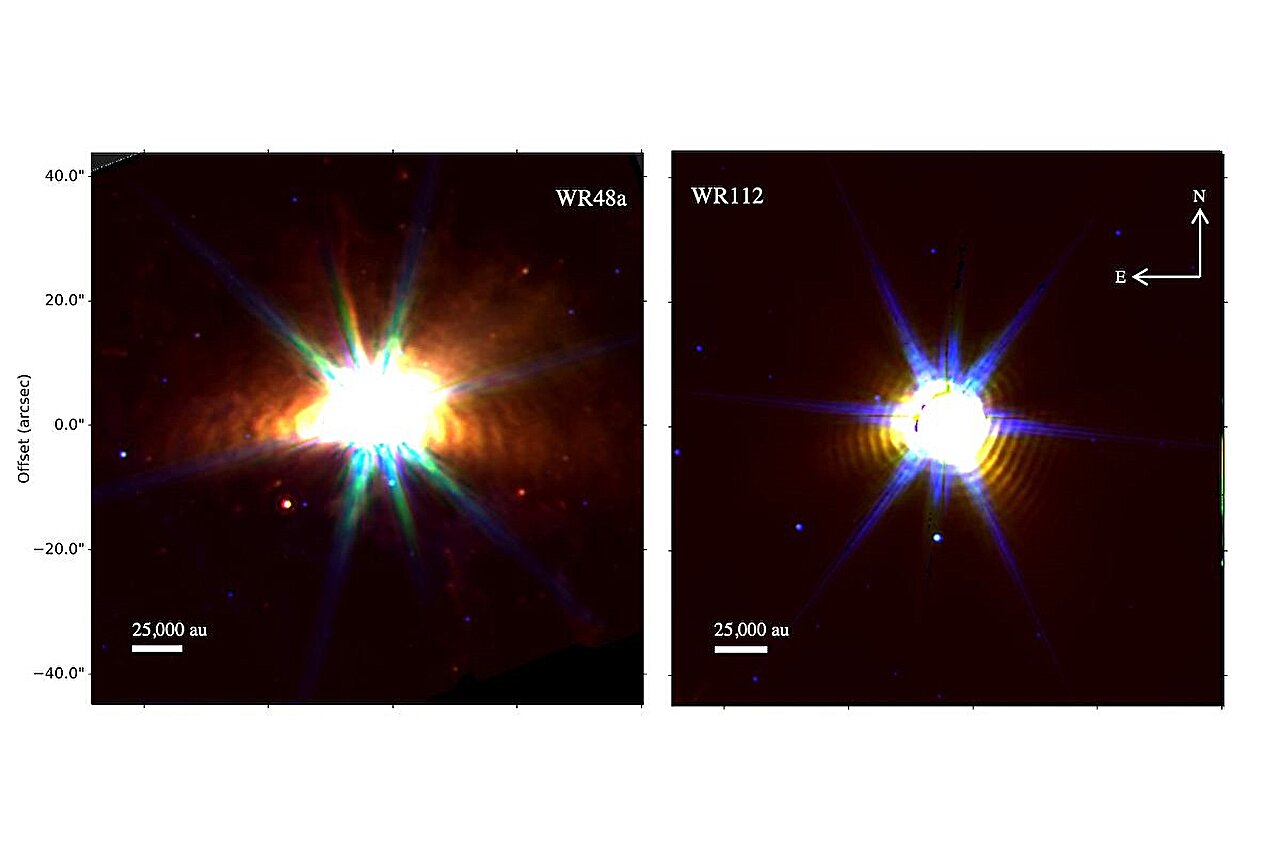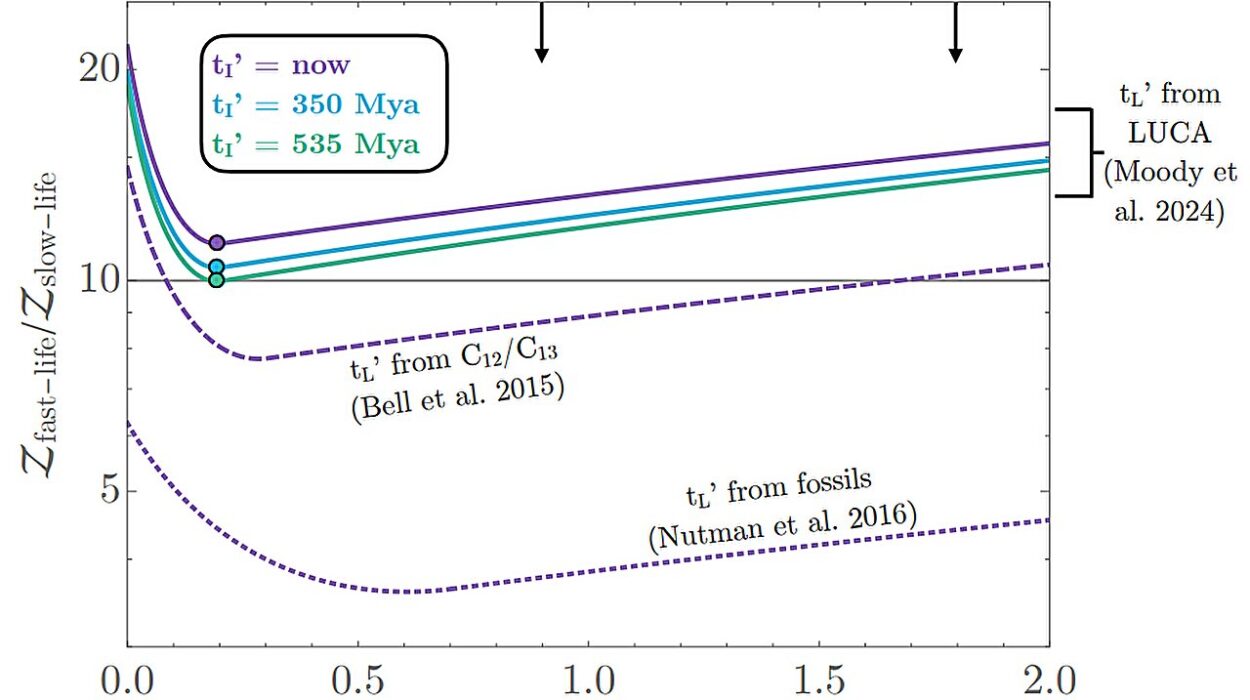For decades, the fate of our home galaxy, the Milky Way, seemed sealed. Like the final act of a slow-motion tragedy unfolding across the cosmos, astronomers believed it was destined to collide with our nearest galactic neighbor, Andromeda. The projected cataclysm, a merging of two massive spiral galaxies, was thought to be inevitable—occurring roughly five billion years from now. This long-range forecast, supported by solid data and celestial dynamics, inspired awe and a quiet sense of cosmic finality: the Milky Way’s graceful spiral arms swallowed into a chaotic embrace, birthing a new, massive elliptical galaxy, sometimes poetically named “Milkomeda.”
But a new international study from scientists at the University of Helsinki, Durham University, and the University of Toulouse has just rewritten that narrative. Drawing on the most advanced data available from NASA’s Hubble Space Telescope and the European Space Agency’s Gaia mission, the researchers ran an astonishing 100,000 simulations—each one a possible future for our galaxy. What they found has upended long-held assumptions and offered a surprising twist to our galaxy’s story: the collision may not happen at all, at least not within the originally predicted timescale.
A Galaxy’s Course, Recharted by Precision
What makes this new study so compelling is its foundation: high-precision measurements that were previously unavailable. For the first time, the simulations accounted not just for the known paths of the Milky Way and Andromeda, but also included observational uncertainties—those tiny wiggles in the data that can lead to vastly different outcomes when extrapolated over billions of years. Critically, they also included the gravitational influence of the Milky Way’s largest satellite galaxy: the Large Magellanic Cloud (LMC), a relatively lightweight neighbor with outsized influence.
Until now, the LMC was treated as a minor character in the cosmic play. With a mass just 15% that of the Milky Way, its gravitational role was considered modest. But new models suggest that its perpendicular pull on the Milky Way has shifted our galaxy’s motion just enough to change the projected dance with Andromeda. This subtle but critical adjustment could make the difference between a future collision and a long-lasting near miss.
The numbers tell a dramatic tale. In the 100,000 simulations, only about 2% showed a merger occurring within the next five billion years. This is a stark contrast to earlier predictions, which nearly guaranteed a crash course within that timeframe. Instead, the majority of scenarios played out in one of two ways: either the galaxies experienced one or more close encounters before eventually merging far later—around eight to ten billion years from now—or they drifted past each other at a great enough distance to continue evolving independently for an extremely long time.
When Predictions Shift, So Does Perspective
Lead author Dr. Till Sawala of the University of Helsinki is quick to clarify that these new findings don’t mean past predictions were incorrect. “When we tried to start from the same assumptions as previous researchers,” he said, “we recovered the same results. We’ve simply been able to explore a much larger space of possibilities, taking advantage of new data.”
It’s a nuance that matters. Science builds not by disproving old knowledge entirely, but by refining it—sharpening the edges of uncertainty with better tools and more sophisticated models. In this case, those tools include Gaia’s unprecedented ability to measure stellar positions and motions across the galaxy with stunning accuracy, and the computational power to simulate gravitational interactions over cosmic timescales.
Importantly, the team also included the variable of observational uncertainty, a key limitation in previous predictions. Earlier studies often modeled only the most probable outcome based on fixed values, assuming a kind of galactic determinism. But the universe, as it turns out, thrives on nuance. By acknowledging that our measurements have margins of error—and by rigorously incorporating those margins into their simulations—the team has painted a far more complex and realistic picture of what might lie ahead.
From Doomed Collision to Slow Waltz
The idea that our galaxy might not merge with Andromeda any time soon is both thrilling and strange. The image of a titanic galactic collision has long captivated public imagination, fueled by artist renderings of twisted stellar arms, exploding gas clouds, and violently merging black holes. It’s a vision of chaos and beauty, a cosmic spectacle that humans would never witness—but one that shaped our sense of place in the universe.
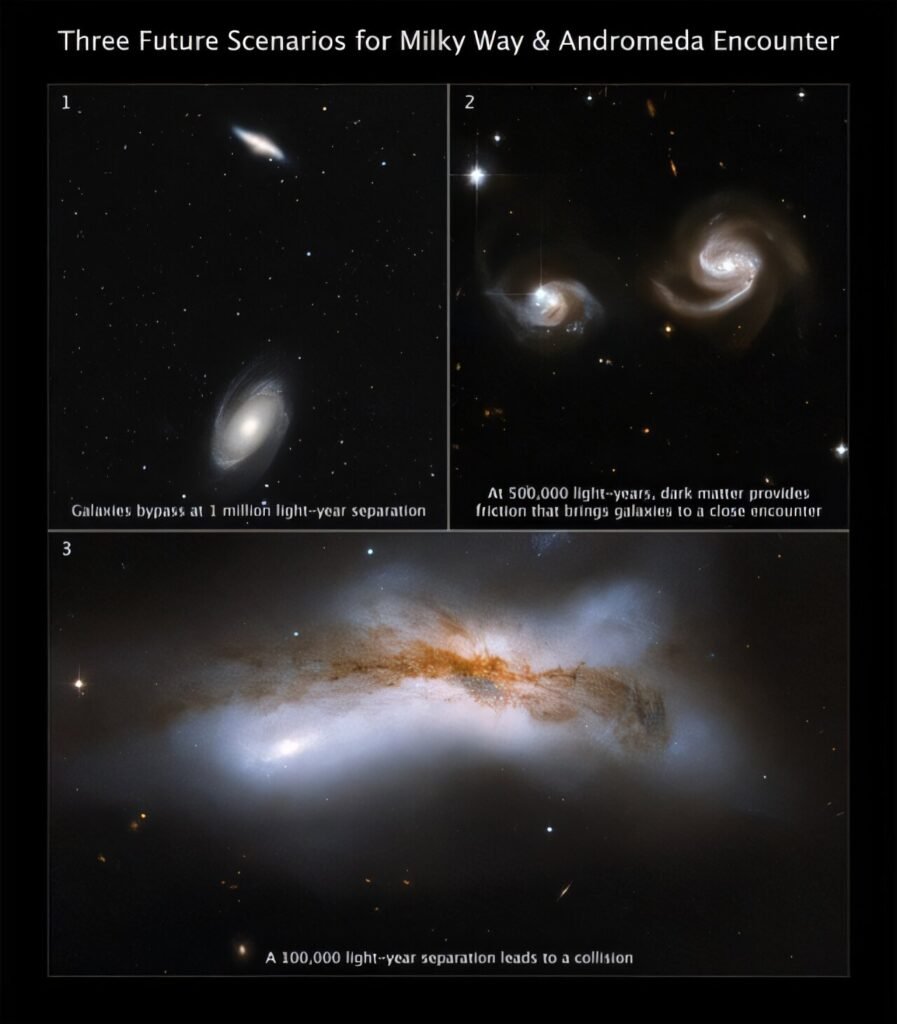

Now, that apocalyptic vision is tempered. The revised timeline suggests that even if a merger does eventually occur, it will likely happen long after our Sun has completed its life cycle. In about five billion years, the Sun is expected to swell into a red giant, engulfing Mercury and Venus and possibly incinerating Earth before collapsing into a white dwarf. By the time the Milky Way and Andromeda finally fall into each other’s arms—if they do—the Solar System may no longer exist in any recognizable form.
That realization, far from being disappointing, opens up an even more poetic possibility: that the cosmos is not on a fixed trajectory toward destruction, but a realm of unfolding possibilities. The galaxies may pass like ships in the night, influenced by unseen tides and celestial eddies, continuing their independent journeys for far longer than once thought.
A Living Universe, Still in Motion
Study co-author Professor Alis Deason of Durham University emphasizes the broader implications of this discovery. “These results are significant for the fate of our galaxy,” she noted. “It used to appear destined to merge with Andromeda, forming a colossal ‘Milkomeda.’ Now, there is a chance that we could avoid this fate entirely.”
It’s a subtle but important shift in how we understand galactic evolution. The universe, it turns out, is not merely a sequence of grand collisions and chaotic transformations. It is also a place where delicate gravitational balances, like the LMC’s gentle tug on the Milky Way, can redirect history. This growing understanding underscores how dynamic and finely tuned the cosmos really is.
And this knowledge, like the galaxies themselves, continues to evolve. More data is on the way, especially from Gaia, which is expected to deliver even more precise measurements of key variables—especially the tricky transverse motion of Andromeda. This motion, which involves the side-to-side movement of the galaxy relative to our own, is notoriously difficult to measure. But it holds enormous influence over the projected outcomes of the galactic interaction.
With improved measurements, future simulations will narrow down the range of possible futures even more. It’s a bit like predicting the path of a comet based on current data: the more you know, the better your model becomes—and the more the uncertainties shrink.
Cosmic Fireworks, or Quiet Continuance?
The potential for a future collision has long been framed as a kind of inevitable firework display on a galactic scale. Indeed, we have observational evidence from other galaxies—spectacular images of cosmic smash-ups, where massive spirals intertwine, their gas clouds igniting new waves of star formation, and central black holes gorging on infalling matter, releasing bursts of radiation as bright as entire galaxies.
Durham cosmologist Professor Carlos Frenk captures the wonder of this process. “The universe is a dynamic place, constantly evolving,” he said. “We see external galaxies often colliding and merging with other galaxies, sometimes producing the equivalent of cosmic fireworks when gas, driven to the center of the merger remnant, feeds a central black hole, emitting an enormous amount of radiation.”
Yet the idea that our own galaxy may sidestep such a fate introduces a new chapter in the story. It’s not less dramatic, but differently so—a narrative of restraint, delicately balanced forces, and long-term survival. Rather than being consumed in a chaotic union, the Milky Way may glide past its partner in an eternal waltz, shaped not by violence, but by grace.
Simulating Billions of Years: A Triumph of Technology and Imagination
The scale of what the research team has achieved is remarkable in its own right. To simulate the complex gravitational interactions of entire galaxies over billions of years is a computational feat that would have seemed impossible a generation ago. These simulations do not simply play out a single, deterministic future—they explore a vast landscape of what-ifs, each shaped by subtle shifts in mass, velocity, orientation, and motion.
Professor Frenk reflected on the magnitude of this accomplishment: “When I see the results of our calculations, I am astonished that we are able to simulate with such precision the evolution of gigantic collections of stars over billions of years and figure out their ultimate fate. This is a testimony to the power of physics allied to the power of large supercomputers.”
Indeed, the effort reflects the essence of modern cosmology: an elegant partnership between observation and theory, data and imagination, rigor and wonder. Each simulation is not just a prediction—it’s a vision of a possible future, based on the best knowledge humanity has ever had about the structure and behavior of the universe.
A Future Still Unfolding
As the Gaia mission continues to refine our map of the Milky Way and its neighbors, and as future telescopes push the boundaries of observation even further, we can expect this story to continue evolving. It is a story not just about distant galaxies, but about ourselves—about how we situate our tiny, temporary lives in the grandeur of cosmic time.
Perhaps, in the end, it doesn’t matter whether the Milky Way and Andromeda merge in five billion years, ten billion years, or never at all. What matters is that we are here now, capable of asking these questions, of measuring the sky with exquisite precision, and of imagining futures we will never see.
The stars may move slowly, but our understanding of them races forward—and with each revelation, the universe becomes not just more knowable, but more profoundly alive.
Reference: Till Sawala, No certainty of a Milky Way–Andromeda collision, Nature Astronomy (2025). DOI: 10.1038/s41550-025-02563-1. www.nature.com/articles/s41550-025-02563-1
